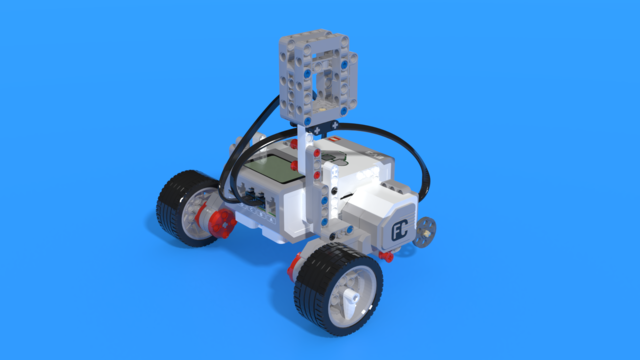In Python, we can write mathematical equations to variables and input parameters. What happens is that the variables and parameters themselves don't store the equation, but rather calculate it and use it's result.

To access the full video please subscribe to FLLCasts.com
- #1549
- 27 Feb 2020
Basic mathematical operators in Python.
The mathematical operators in the equations that we write in Python are written using the following signs:
- "+" addition;
- "-" subtraction
- "*" multiplication
- "/" division
There are other mathematical operations we can use, but these are the fundamentals.
How to use expressions as a variable value
Let's look at an example where the speed is set using the expression 250 +250:
Motor(Port.B).run_time(250 + 250, 3000, Stop.COAST, False) Motor(Port.C).run_time(250 + 250, 3000, Stop.COAST)
In this example, the motors are turning at a speed of 500. These expressions can be stored in a variable "motor_speed" and this variable can be replaced in the speed input parameters.
# Create your objects here. ev3 = EV3Brick() speed = 250 + 250 # Write your program here. Motor(Port.B).run_time(speed, 3000, Stop.COAST, False) Motor(Port.C).run_time(speed, 3000, Stop.COAST)
How do expressions depend on variables
This way we can create variables that rely on other variables. Here's an example where the "motor_speed" variable is equal to the new "distance" variable divided by the new "move_time" variable:
# Create your objects here. ev3 = EV3Brick() time = 3000 distance = 100 speed = distance / time # Write your program here. Motor(Port.B).run_time(speed, time, Stop.COAST, False) Motor(Port.C).run_time(speed, time, Stop.COAST)
Let's look at an example where the robot needs to turn in an arch. The experiment will be run at the maximum speed of the motors and it will be changed up a lot, but we know, that the lowest speed of the slower motor will always be half of the speed of the faster motor:
# Create your objects here. ev3 = EV3Brick() speed = 1000 # Write your program here. Motor(Port.B).run_time(speed, 3000, Stop.COAST, False) Motor(Port.C).run_time(speed / 2, 3000, Stop.COAST)
Notice that only one variable is used and the input parameter of the "run_time" command on Motor C uses the speed variable divided by 2. This way we can reduce the number of variables in our program and create interconnections between the variables whenever that is required.
Courses and lessons with this Tutorial
This Tutorial is used in the following courses and lessons

Python with LEGO Mindstorms EV3 - Level 1
The course introduces students to the programming language Python. We use LEGO Mindstorms EV3 Robots. Python is a popular programming language. It could be used for introducing students to programming, for academic studies, for developing machine learning algorithms and as a general-purpose language.
During the course, students learn how to read and how to develop Python programs. They use an Integrated Development Environment called Visual Studio Code. Robots are programmed to perform interesting and funny tasks like "bringing you water". The level ends with competition on a playing field with boxes.
- 74
- 28:18
- 114

Lesson 4 - Strange Bot
Introduction
Today we will encounter a significant problem our engineers have had to face ever since a man has had to step on the Moon, namely sending robots to the Moon. When we add something to a rocket that has to reach the Moon, you can imagine how many things need to be carefully calculated.
From the position of the rocket to the center of mass, to the momentum of the rocket and many other things. This is why when scientists wish to send a robot to the moon, they have to make a lot of compromises with its construction.
After the deployment of Moon Rover 2 to the Moon, scientists began working on a robot to deploy with the next Moon Rover. For this purpose, the robot needs to fit into the remaining space on the rover. This space is not in a standard shape, so the robot will have to have an irregular shape as well.
The plan is for it to be mounted on to the Moon Rover and when the vehicle is deployed from the rocket, the robot will disengage and will maneuver away before the astronauts proceed to drive it.

- 7
- 5
- 11
- 3d_rotation 1